
Baron Lilford, of Lilford in the County of Northampton, is a title in the Peerage of Great Britain. It was created in 1797 for Thomas Powys, who had previously represented Northamptonshire in the House of Commons. His grandson, the third Baron, served as a Lord-in-waiting from 1837 to 1841 in the Whig administration of Lord Melbourne. He was succeeded by his son, the fourth Baron, an ornithologist.
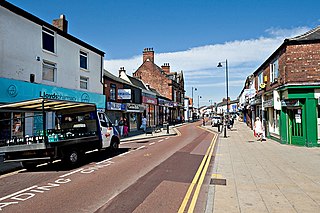
Atherton is a town in the Metropolitan Borough of Wigan in Greater Manchester, England and historically part of Lancashire. The town, including Hindsford, Howe Bridge and Hag Fold, is 5 miles (8.0 km) south of Bolton, 7 miles (11.3 km) east of Wigan, and 10 miles (16.1 km) northwest of Manchester. From the 17th century, for about 300 years, Atherton was known as Chowbent, which was frequently shortened to Bent, the town's old nickname. During the Industrial Revolution, the town was a key part of the Manchester Coalfield.

Lathom House was a large country house in the parish of Lathom in Lancashire, England. Built between 1725 and 1740, the main block was demolished in 1925.

Thomas Atherton Powys, 3rd Baron Lilford, was a British peer and Whig politician.
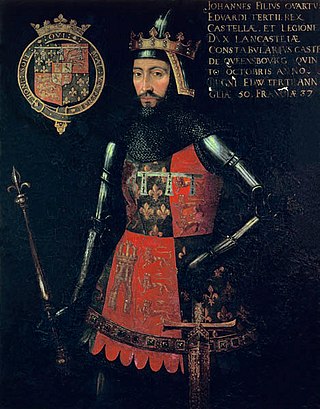
The High Sheriff of Lancashire is an ancient officer, now largely ceremonial, granted to Lancashire, a county in North West England. High Shrievalties are the oldest secular titles under the Crown, in England and Wales. The High Sheriff of Lancashire is the representative of the monarch in the county, and is the "Keeper of The King's Peace" in the county, executing judgements of the High Court through an Under Sheriff.
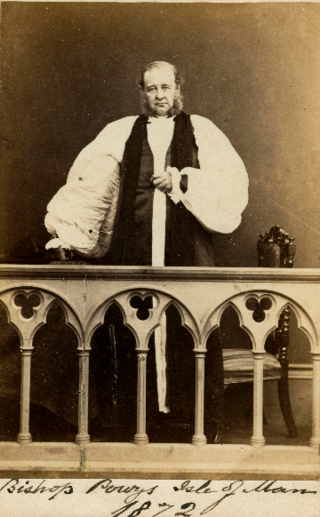
Horatio Powys was a priest in the Church of England and Bishop of Sodor and Man.

Sankey Valley Park is a public park in Warrington, Cheshire. It occupies part of the Sankey Valley and the main park itself covers over 1½ miles between Sankey Bridges in the south and Callands in the north. The valley follows the course of Sankey Brook and the now disused Sankey Canal. The park is enjoyed by walkers, cyclists and anglers and the central section of the park is family orientated with children's play features, a maze and lawned areas. Bewsey Old Hall sits on the edge of the central section of the park. The Trans Pennine Trail passes around 500 yards (460 m) from the southern tip of the park.
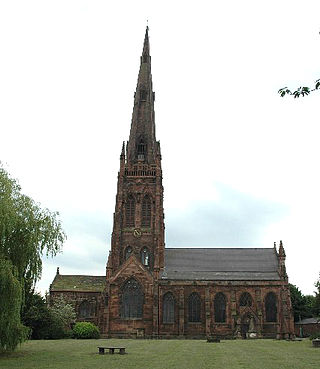
St Elphin's Church is the parish church of the town of Warrington, Cheshire, England. The church is recorded in the National Heritage List for England as a designated Grade II* listed building. It is an active Anglican parish church in the diocese of Liverpool, the archdeaconry of Warrington and the deanery of Warrington.
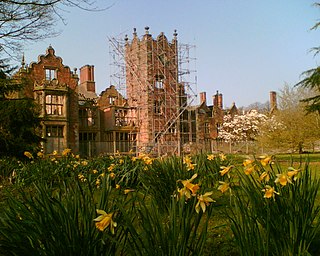
Bank Hall is a Jacobean mansion in Bretherton, Lancashire, England. It is a Grade II* listed building and is at the centre of a private estate, surrounded by parkland. The hall was built on the site of an older house in 1608 by the Banastres who were lords of the manor. The hall was extended during the 18th and 19th centuries. Extensions were built for George Anthony Legh Keck in 1832–1833, to the design of the architect George Webster.

Colonel George Anthony Legh-Keck (1774–1860) was a British MP in the Georgian era who owned landed estates in Leicestershire and Lancashire.
Sir Thomas Boteler Church of England High School is a coeducational Church of England secondary school located in the Latchford area of Warrington in the English county of Cheshire.

Atherton Hall was a country house and estate in Atherton historically a part of Lancashire, England. The hall was built between 1723 and 1742 and demolished in 1824. Christopher Saxton's map shows there was a medieval deer park here in the time of Elizabeth I.

Thomas Powys, 2nd Baron Lilford was a British peer. He was the son of Thomas Powys, 1st Baron Lilford and Mary Mann of Lilford Hall. He succeeded his father as Baron Lilford in 1800. He was educated at Eton College, St John's College, Cambridge and Lincoln's Inn (1794).
John Powys, 5th Baron Lilford, was a British peer and cricketer.

Stephen Powys, 6th Baron Lilford, was a British peer.
Stoughton Grange was a country house in the parish of Stoughton in Leicestershire and the family seat of the Farnham and Beaumont family. The house dated back to 15th century but was demolished in 1926, after being a successful family home for over five hundred years.

Robert Vernon Atherton Gwillym (c.1741–1783) was a British country landowner and politician who sat in the House of Commons from 1774 to 1780.
Sir Richard Atherton, was a Tory politician and an English Member of Parliament elected in 1671 representing Liverpool. He also served as Mayor of Liverpool from 1684 to 1685. He resided at Bewsey Old Hall, Warrington and died in 1687. He was 11th in descent from Sir William Atherton MP for the same county in 1381 and was the last Atherton in the male line to have been a member of parliament.
Walton Hall was a 17th-century historic country house, set in a 300-acre (1.2 km2) estate, which was demolished in the early 20th century. Sometimes referred to as Walton Old Hall, it was situated at the centre of the Walton Hall Park in Walton, Liverpool. Its former residents were Liverpool merchants and the last two families to reside at Walton Hall profited from the Atlantic slave trade. In the 19th century it was the home of Thomas Leyland during his second and third term as Lord Mayor of Liverpool.














